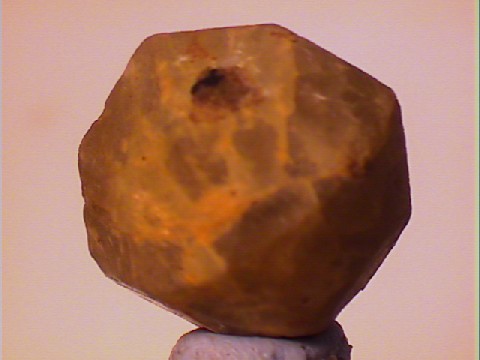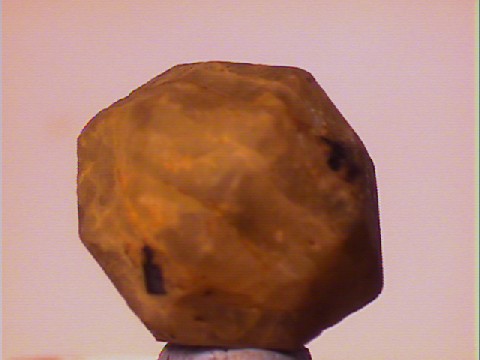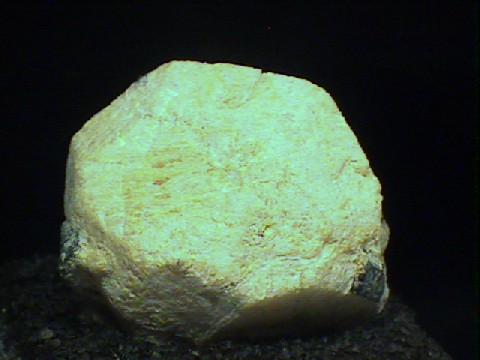 THE MINERAL LEUCITE
THE MINERAL LEUCITE
- Chemistry: KAlSi2O6, Potassium Aluminum Silicate
- Class: Silicates
- Subclass: Tektosilicates
- Group: Feldspathoids
- Uses: mineral specimen and as a minor source of potassium and aluminum.
Specimens
Leucite is one of the few minerals that forms the unique trapezohedron. The trapezohedron has 24 deltoid shaped faces, where each face occupies one third of the position of a single octahedron's face. The minerals of the garnet group and the mineral analcime are the only common minerals that will also form the trapezohedron.
Distinguishing leucite from the garnets and analcime is relatively easy in some cases. The garnets are much harder and usually deeply colored. Leucite has a much lower density and usually has a duller luster than analcime. Also leucite is typically embedded in host rock where as analcime, when displaying good crystals and not massive or granular, is loose or attacted to other minerals in volcanic cavities.
Leucite, KAlSi2O6 is actually distantly related to analcime, NaAlSi2O6-H2O. Leucite is a member of the feldspathoid group of minerals. Analcime, although usually considered a zeolite, is sometimes placed in the feldspathoid group since its chemistry and occassional occurrences are similar.
Minerals whose chemistries are close to that of the alkali feldspars but are poor in silica (SiO2) content, are called feldspathoids. Leucite, like other feldspathoids, is found in silica poor rocks containing other silica poor minerals and no quartz. If quartz were present when the melt was crystallizing, it would react with any feldspathoids and form a feldspar..
At one time leucite was used as a source of potassium and aluminum. Probably due to the high aluminum to silicon ratio, its structure is easily destroyed by acids and this frees the aluminum ions.
Leucite, already a pseudomorph from a high temperature phase, commonly is altered to pseudoleucite. Pseudoleucite is not a mineral but a mixture of nepheline, orthoclase and analcime.
PHYSICAL CHARACTERISTICS:
- Color is clear, white or gray, with yellowish and reddish tints possible.
- Luster is vitreous or greasy to dull.
- Transparency: crystals are transparent, translucent to commonly opaque.
- Crystal System is isometric; 4/m bar 3 2/m at temperatures above 605 degrees C, and tetragonal; either 4 2 2 or 4/m, below 605 degrees C.
- Crystal Habits include the characteristic trapezohedron (actually pseudo-trapezohedron). Also granular and massive.
- Cleavage is absent.
- Fracture is conchoidal
- Hardness is 5.5 - 6.
- Specific Gravity is approximately 2.4 - 2.5 (slightly below average)
- Streak is white.
- Associated Minerals include olivine, labradorite, augite, biotite, nepheline and other feldspathoids.
- Other Characteristics: surface is usually pitted, dull or has a weathered look.
- Notable Occurrences include Mt. Vesuvius, Italy; Magnet Cove, Arkansas, Leucite Hills, Wyoming and Litchfield, Maine, USA; Brazil and Hastings Co, Ontario.
- Best Field Indicators are crystal habit, density, low hardness, luster and associations.





